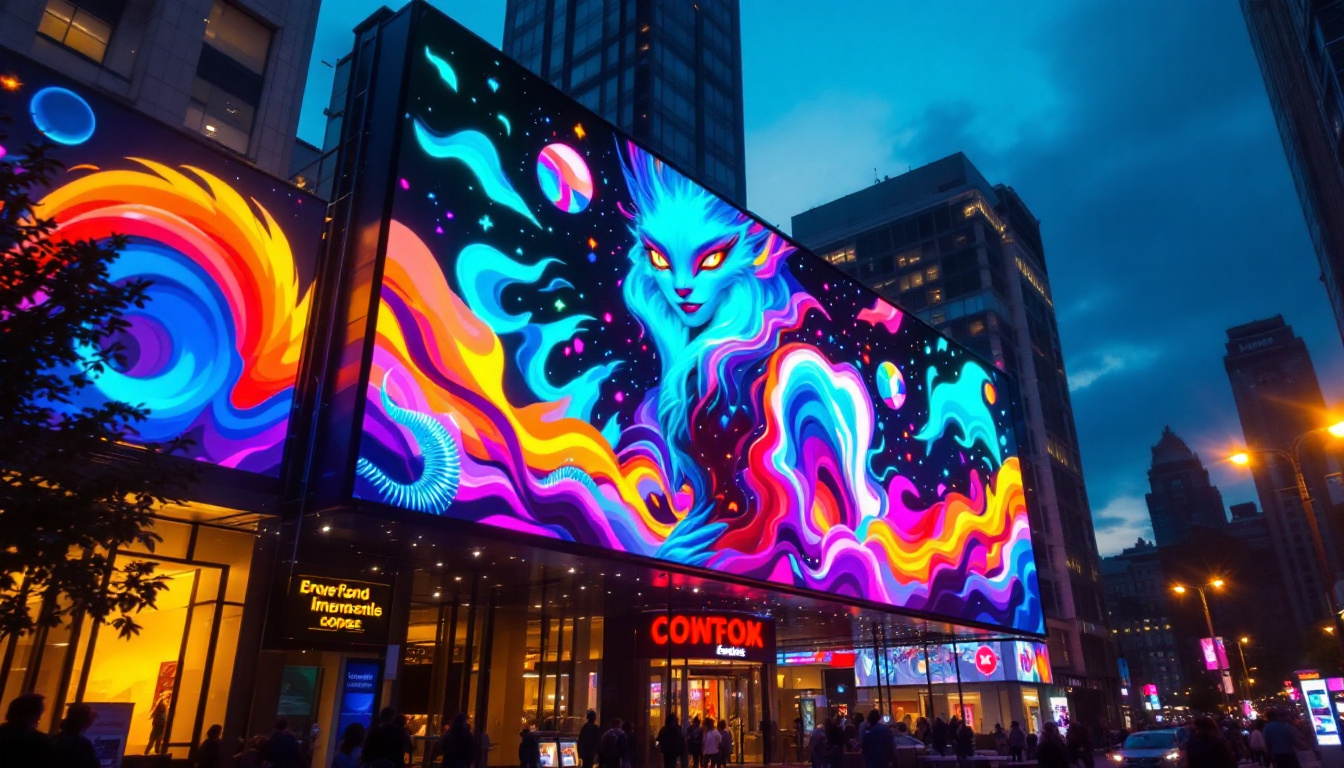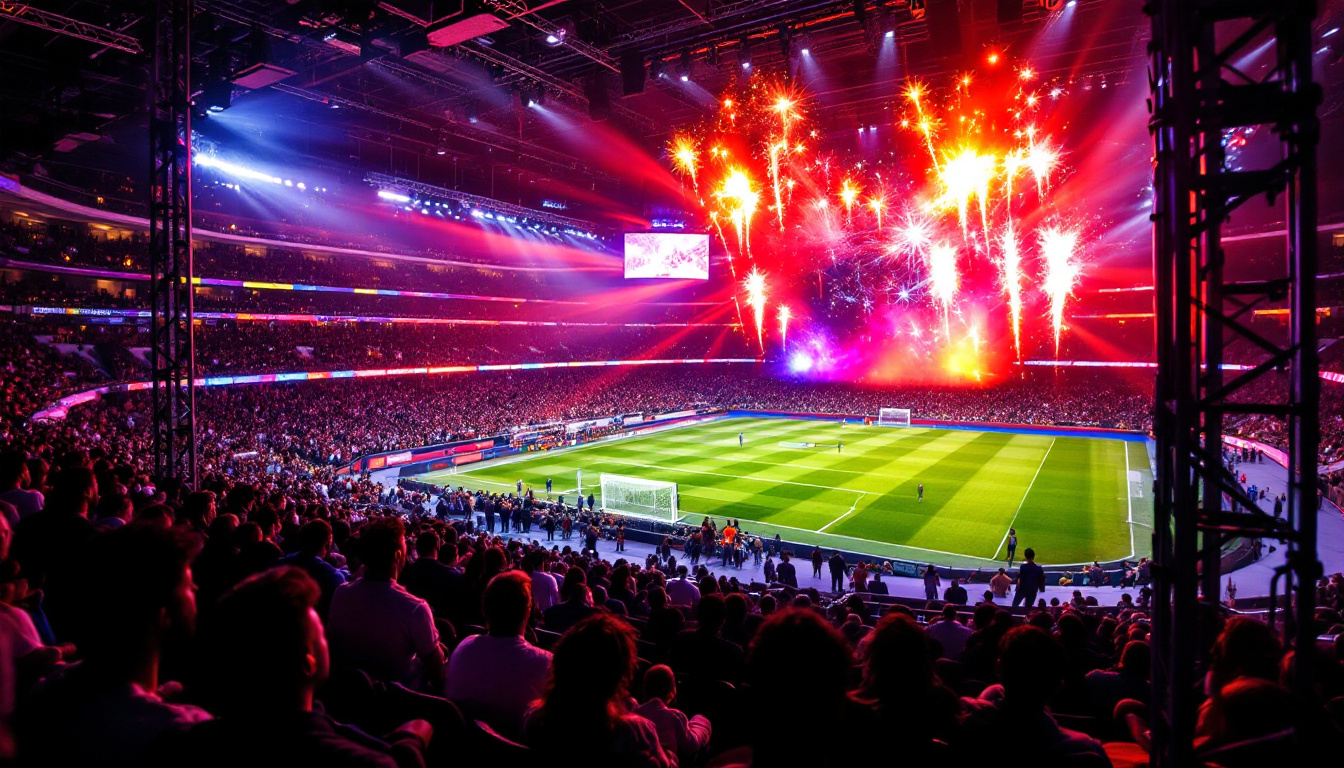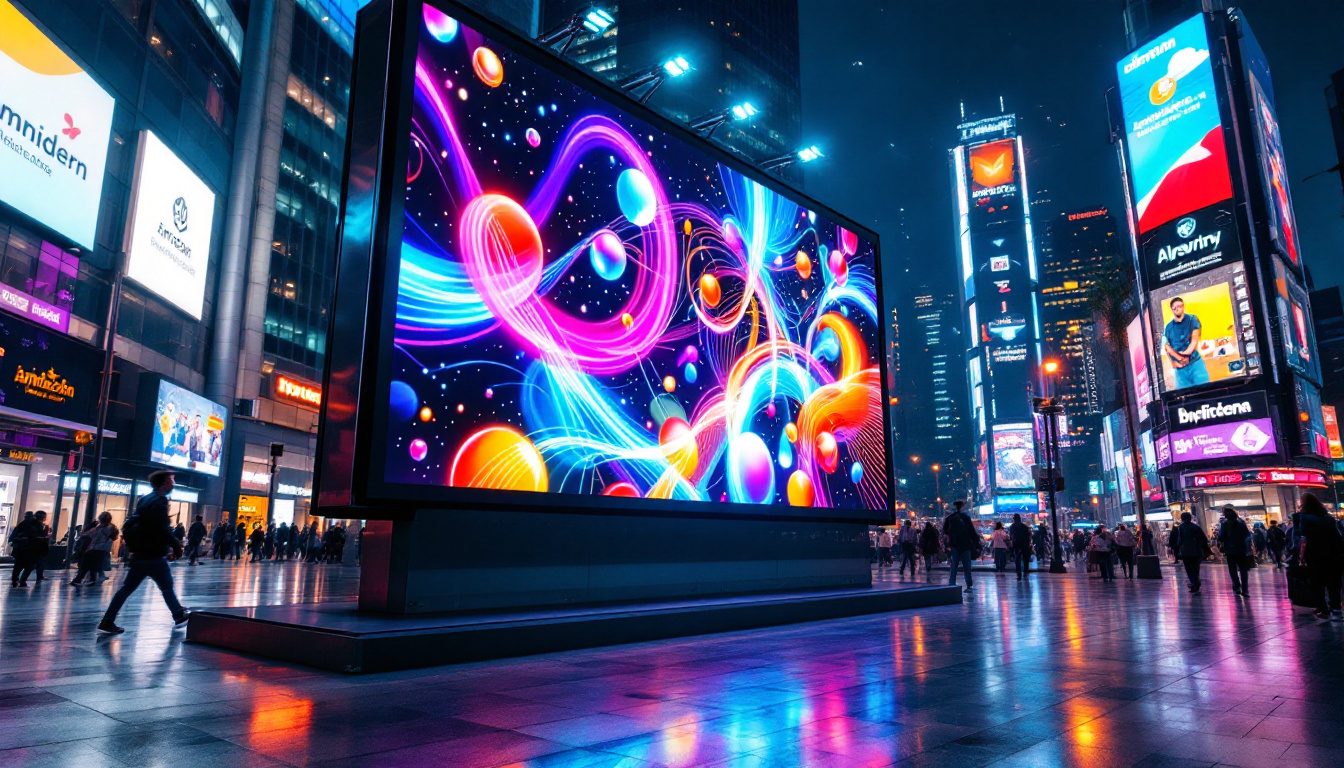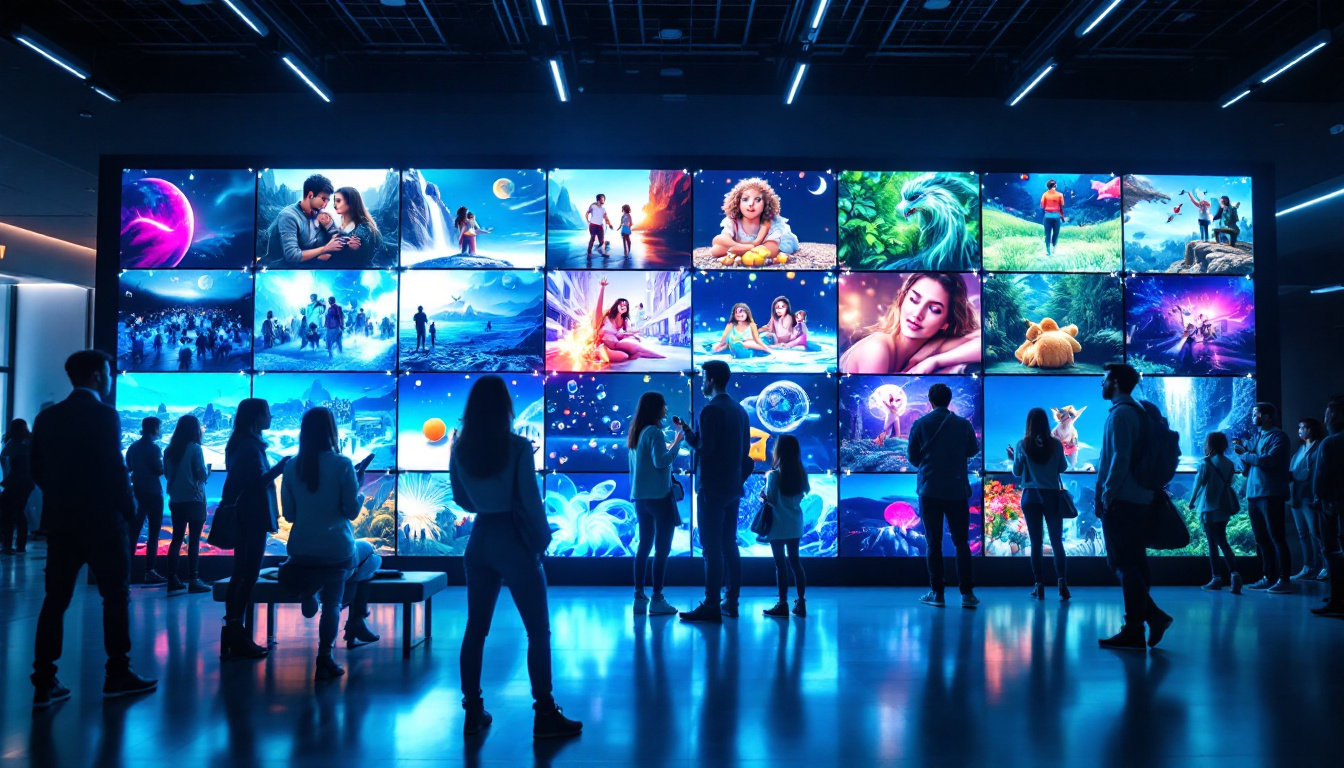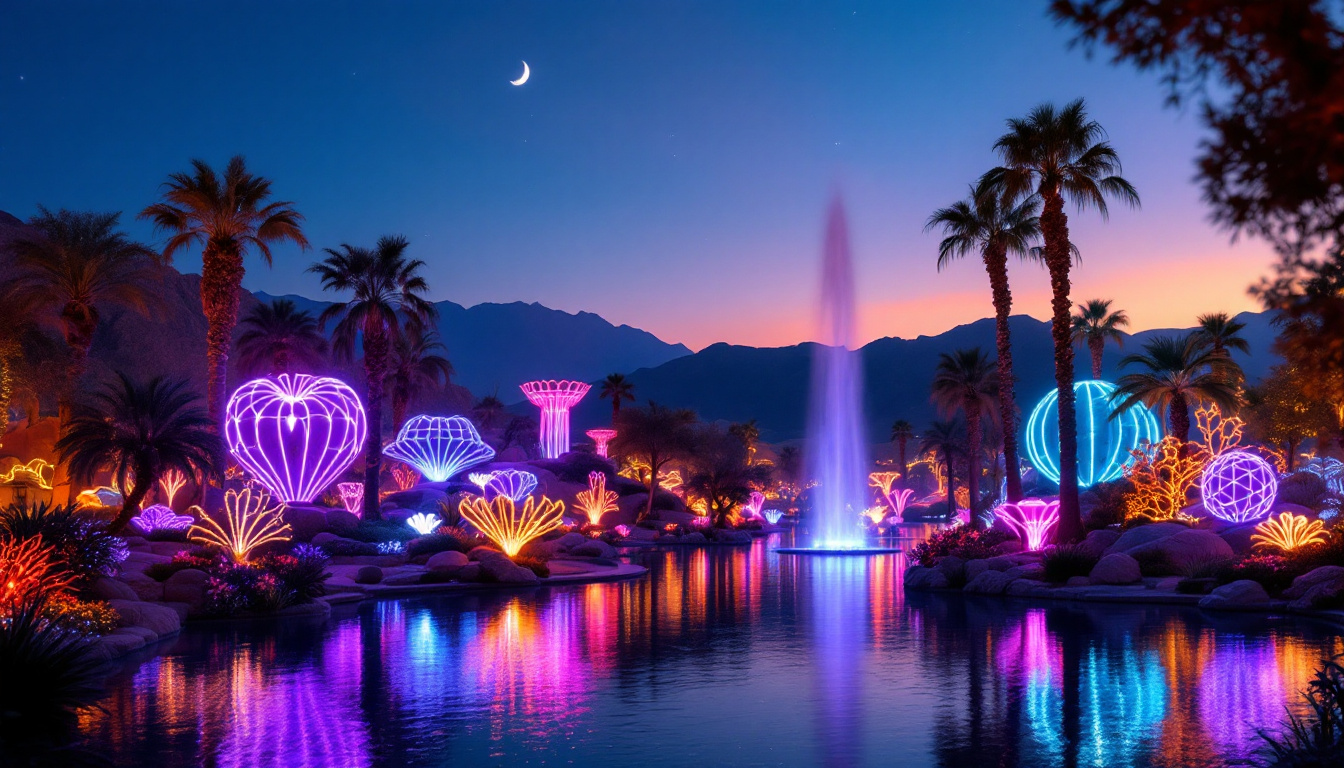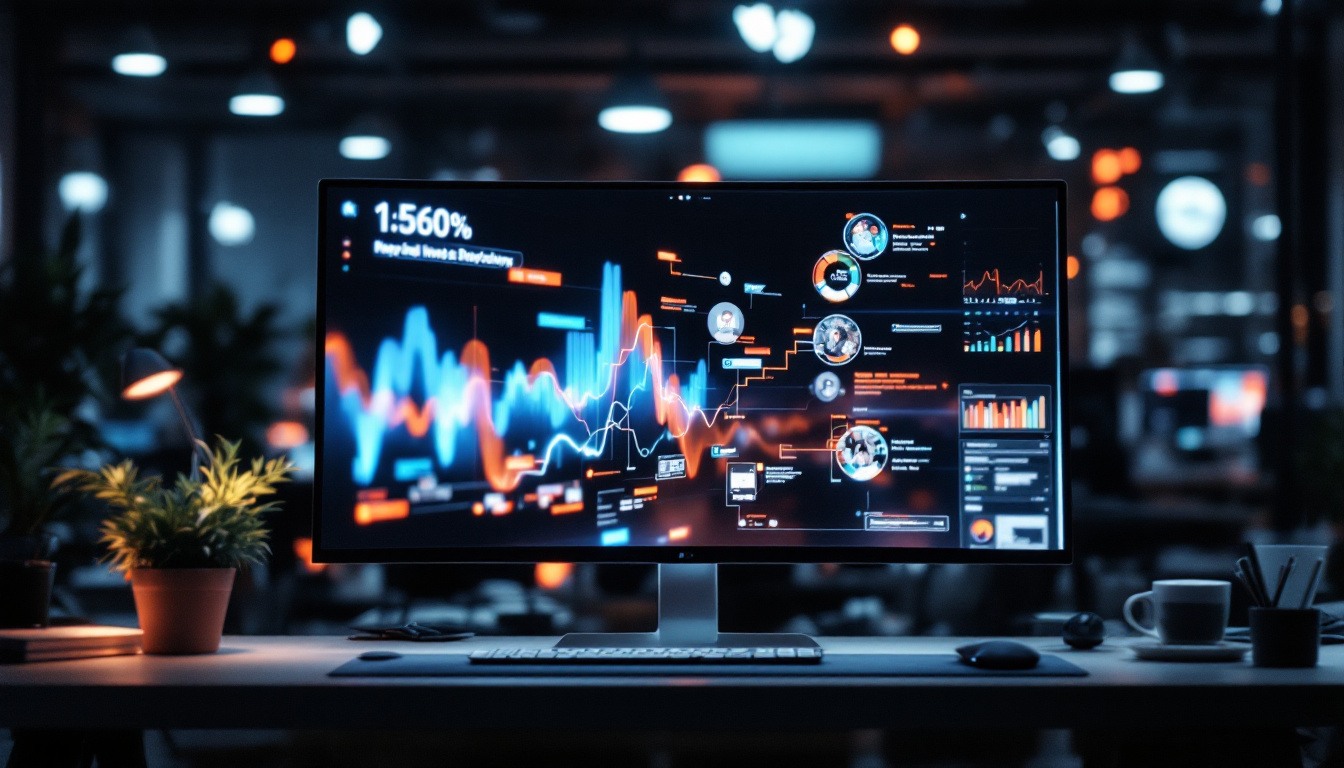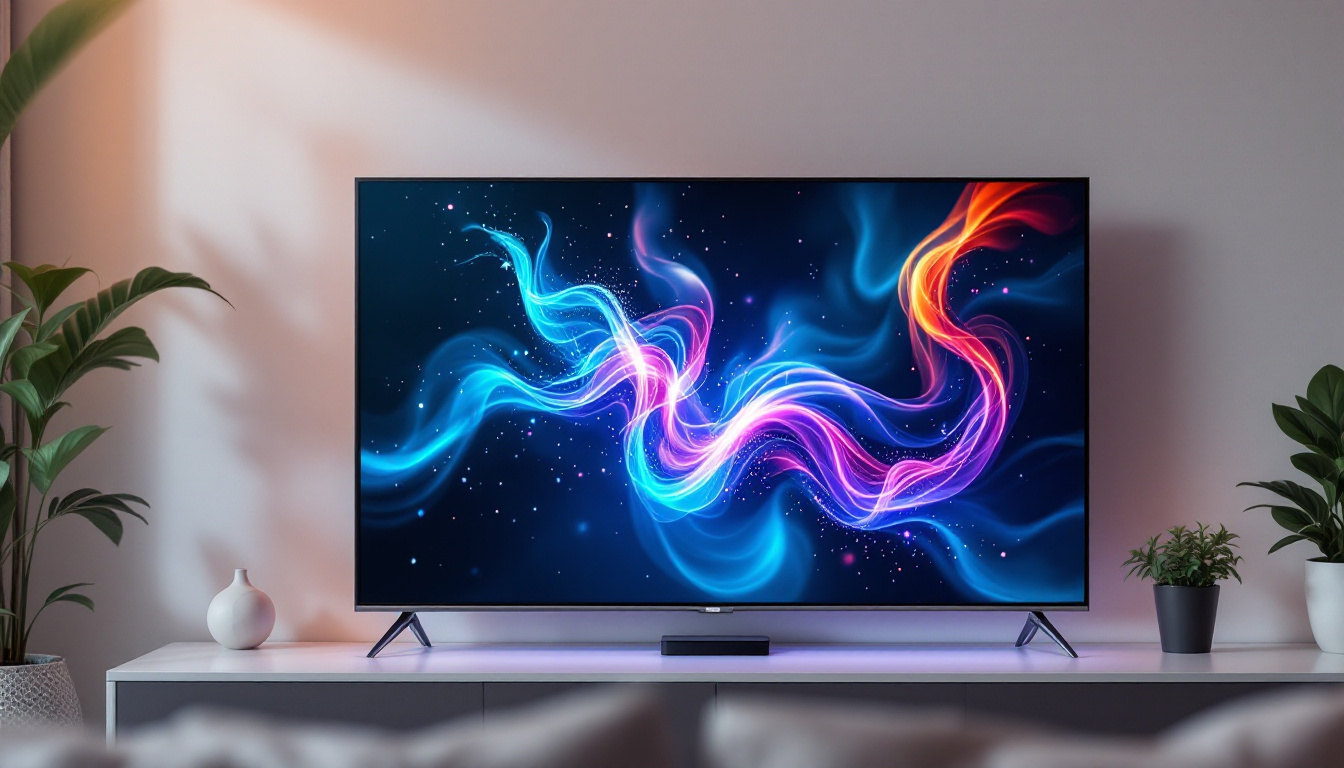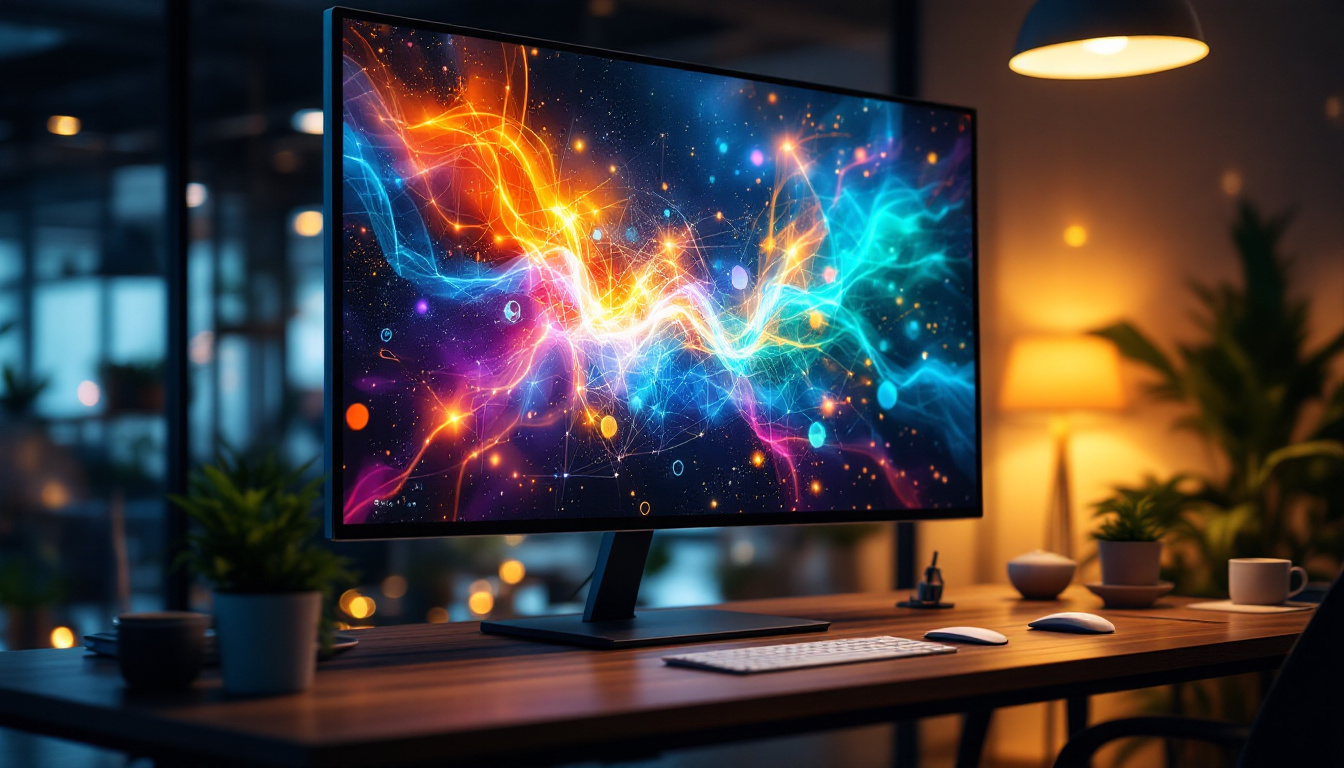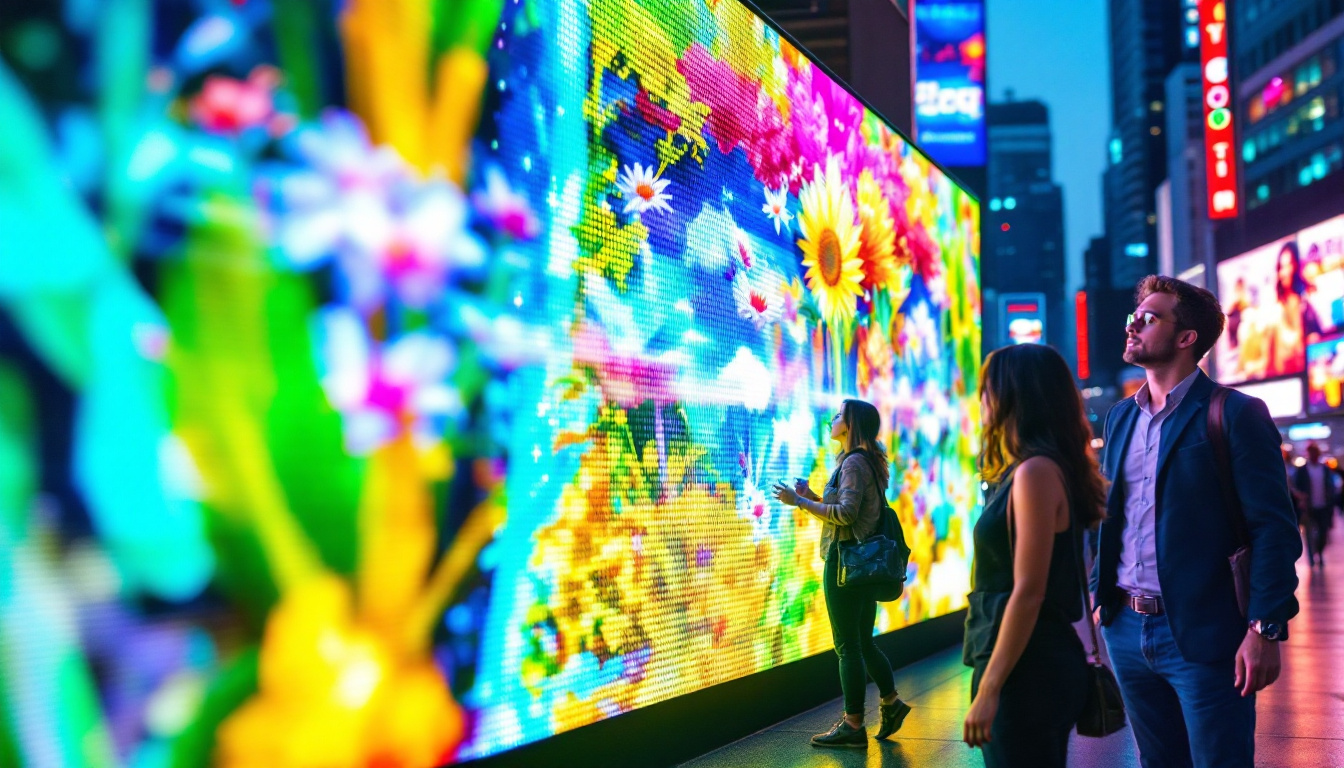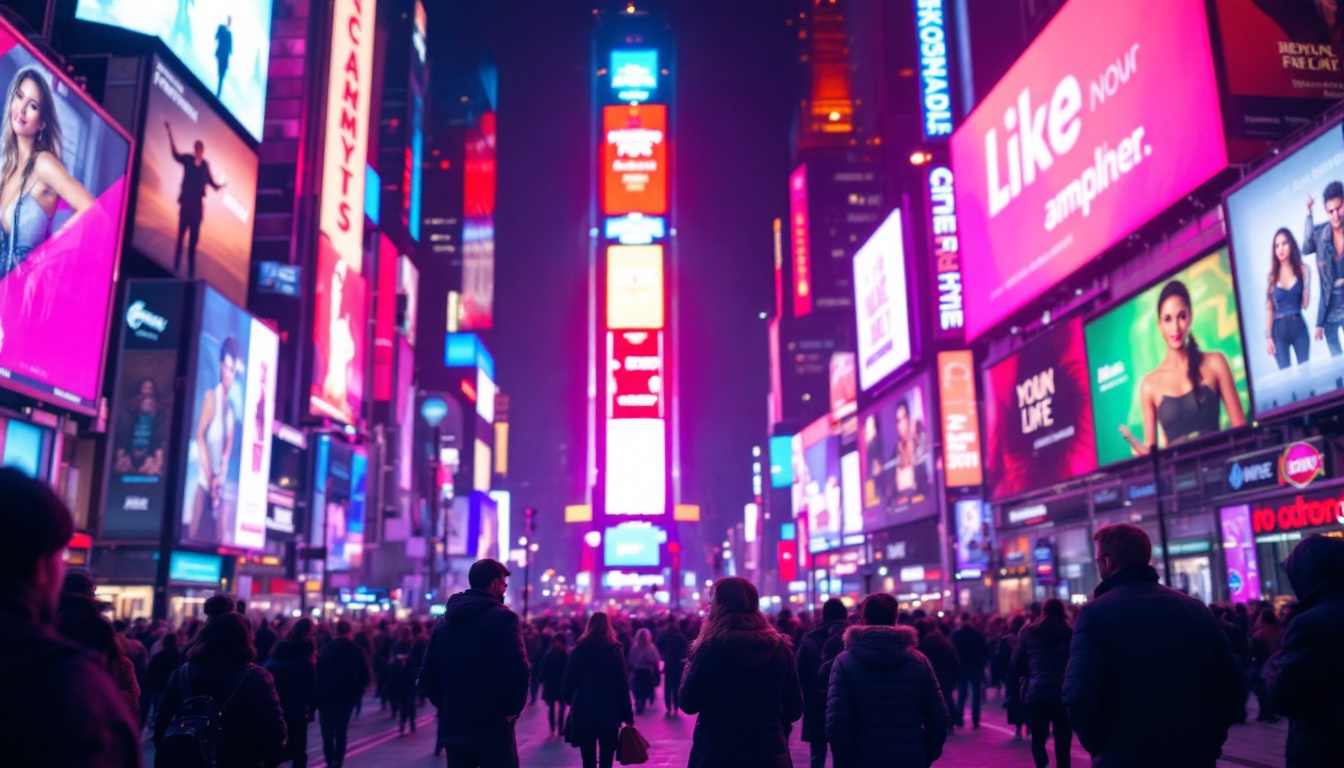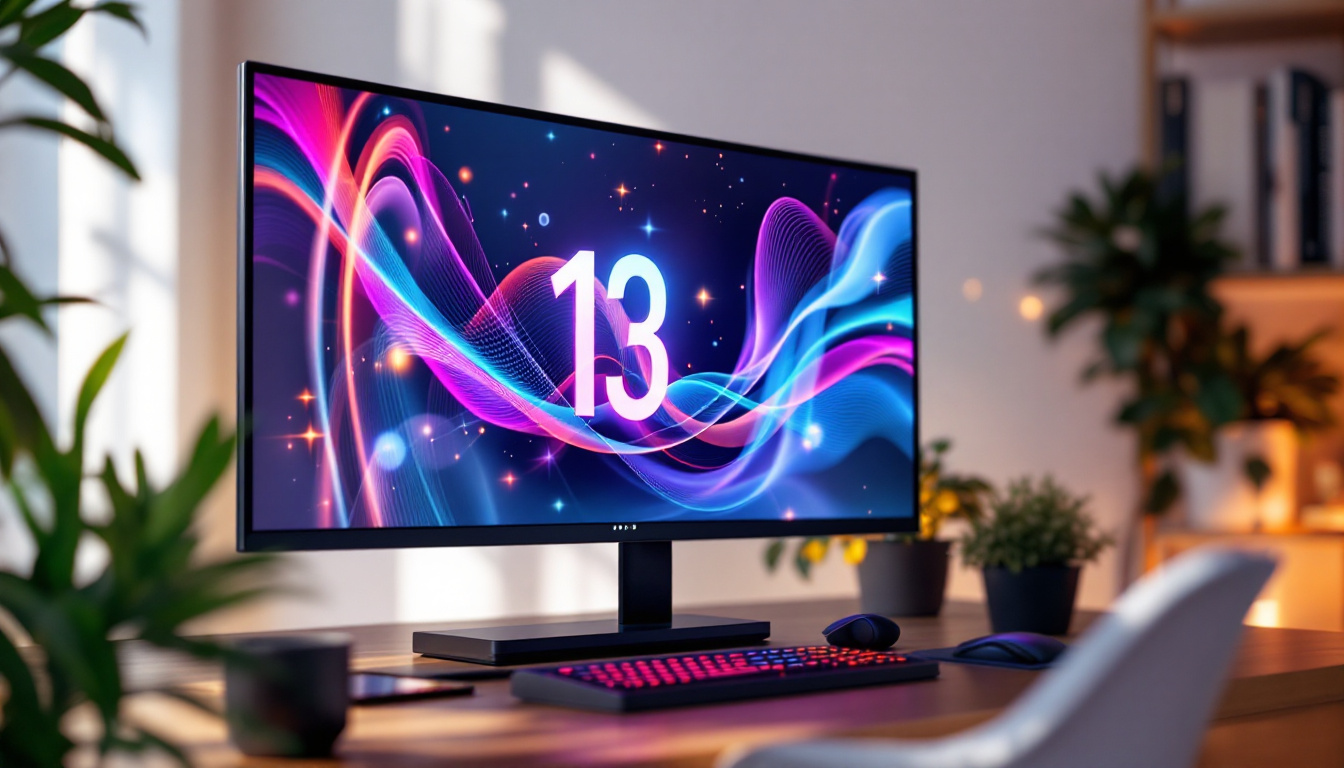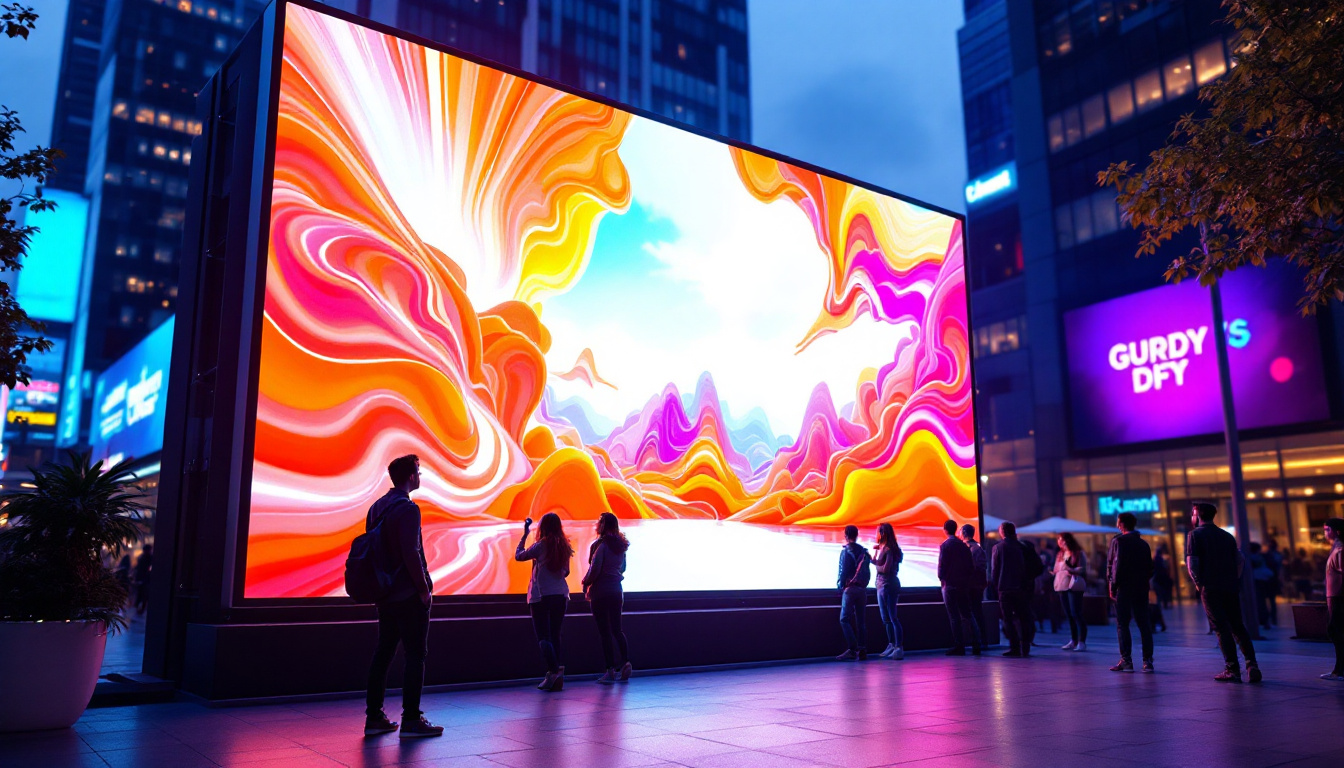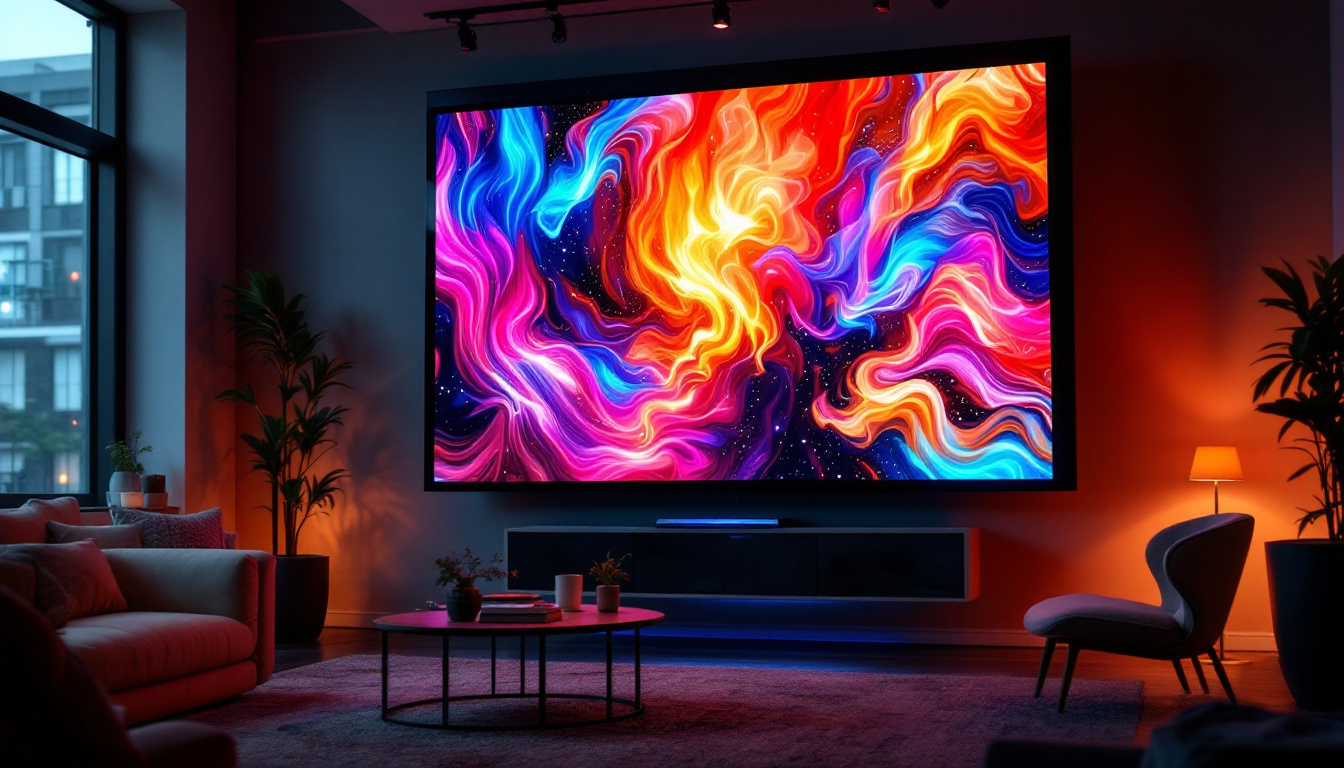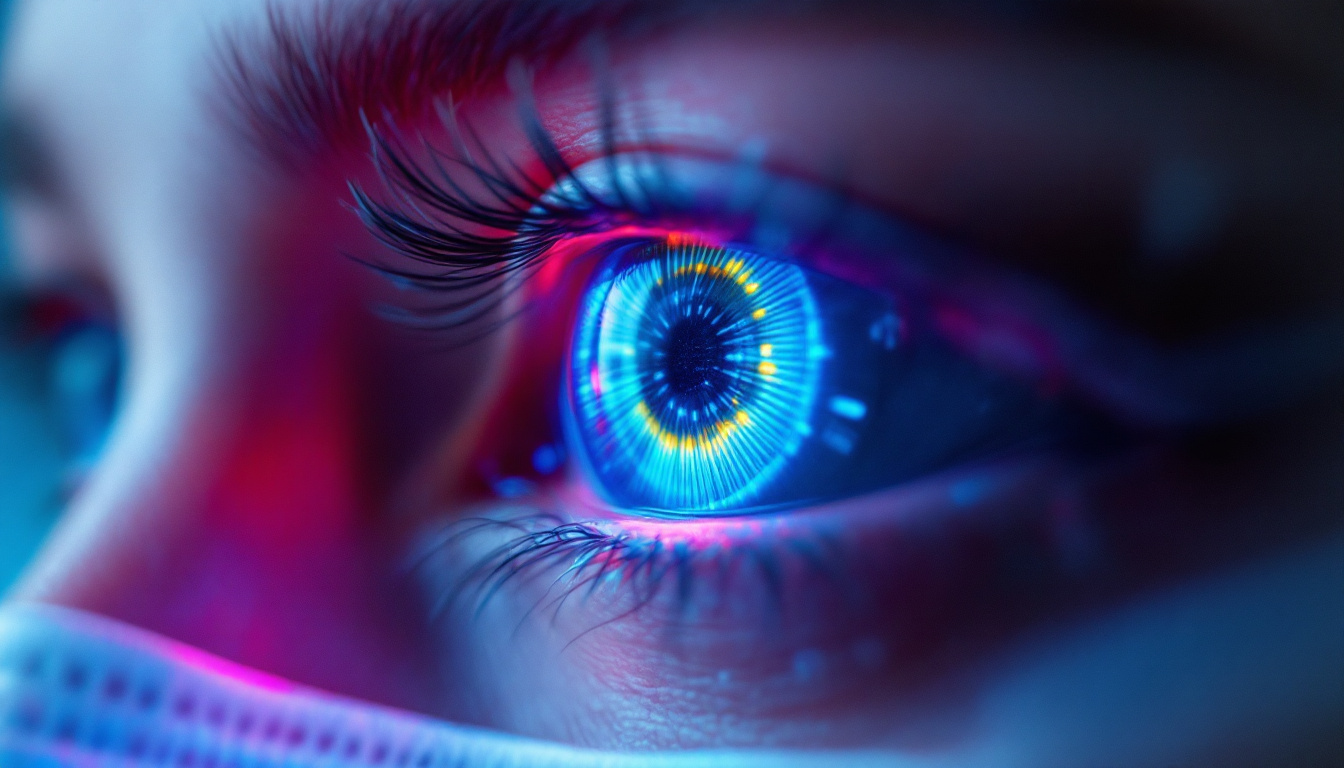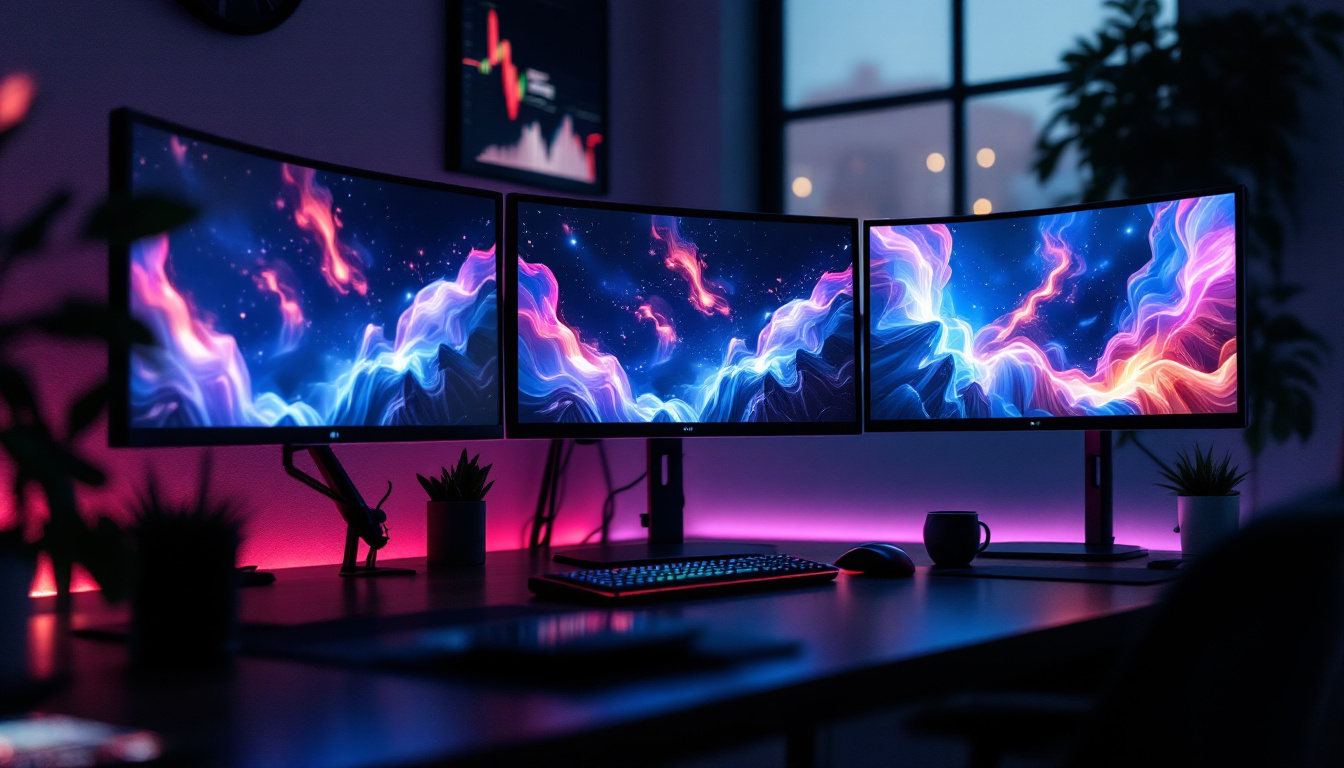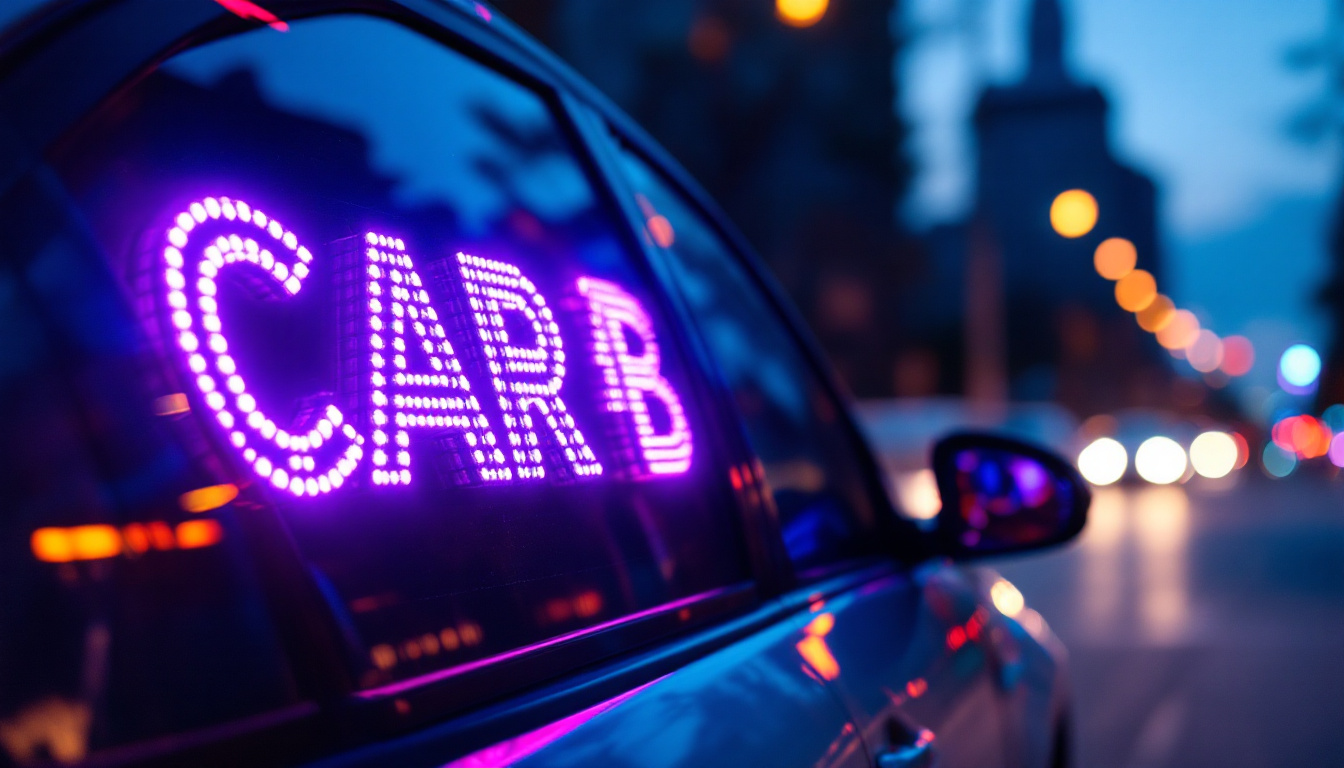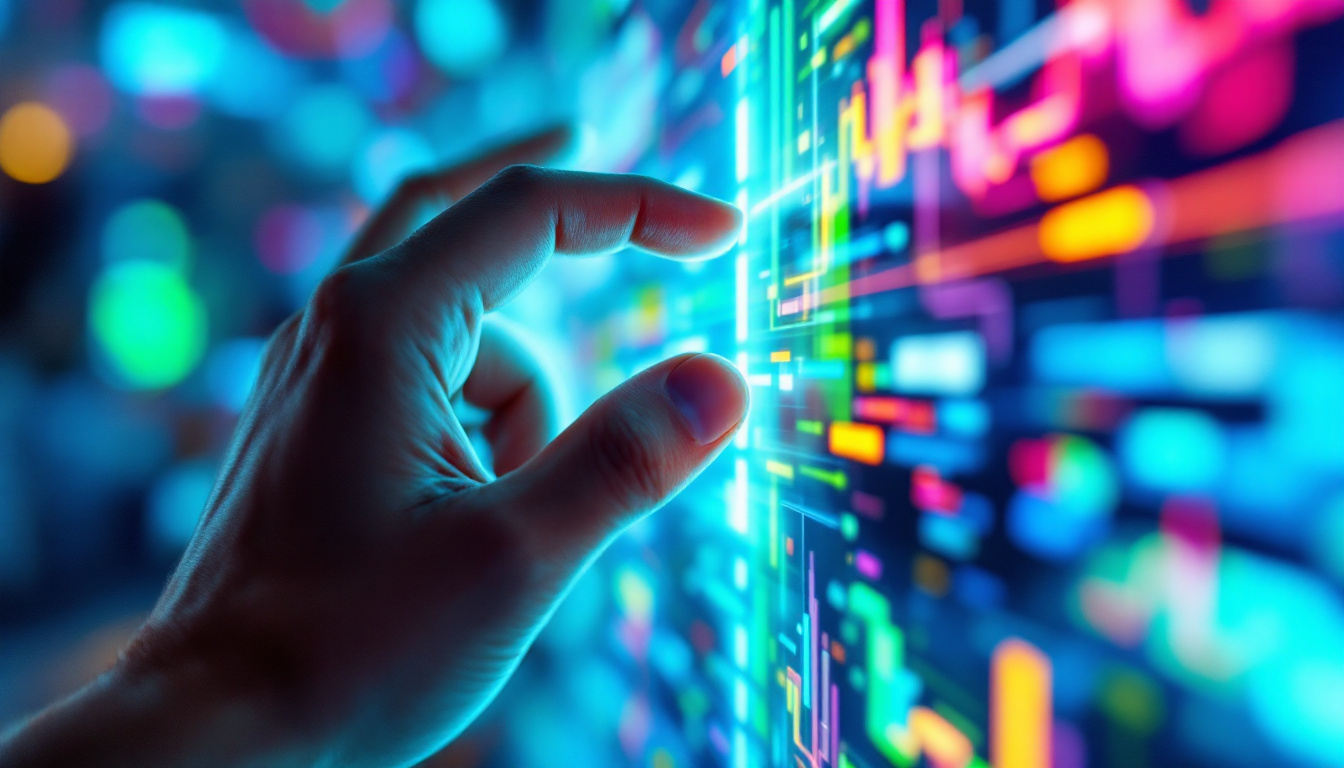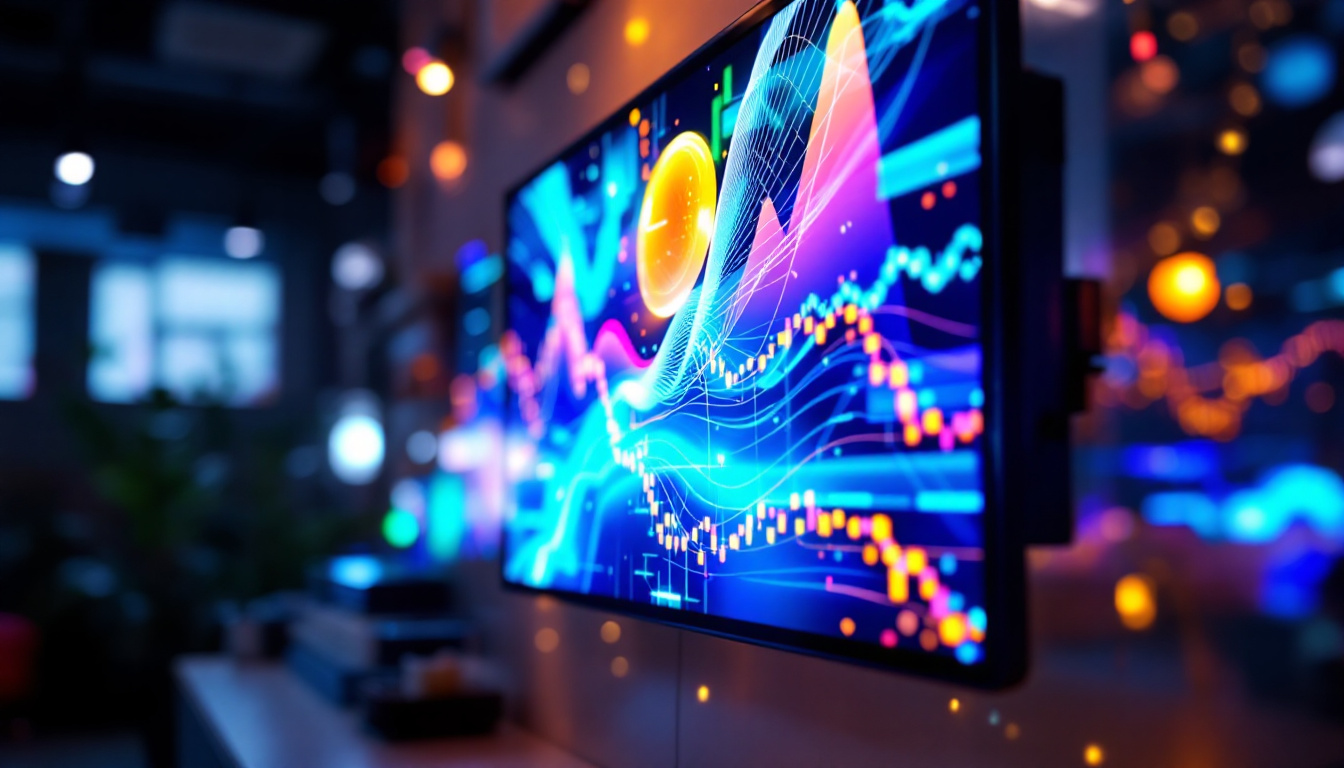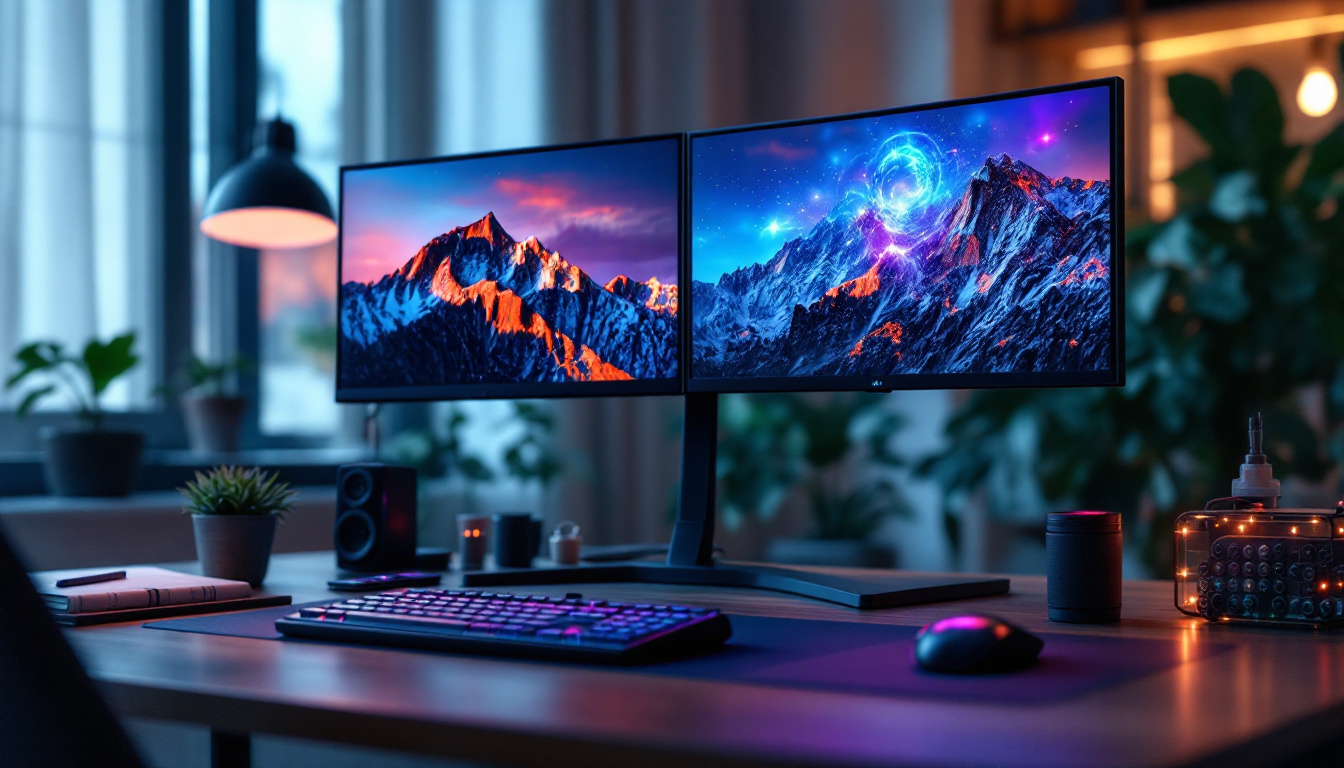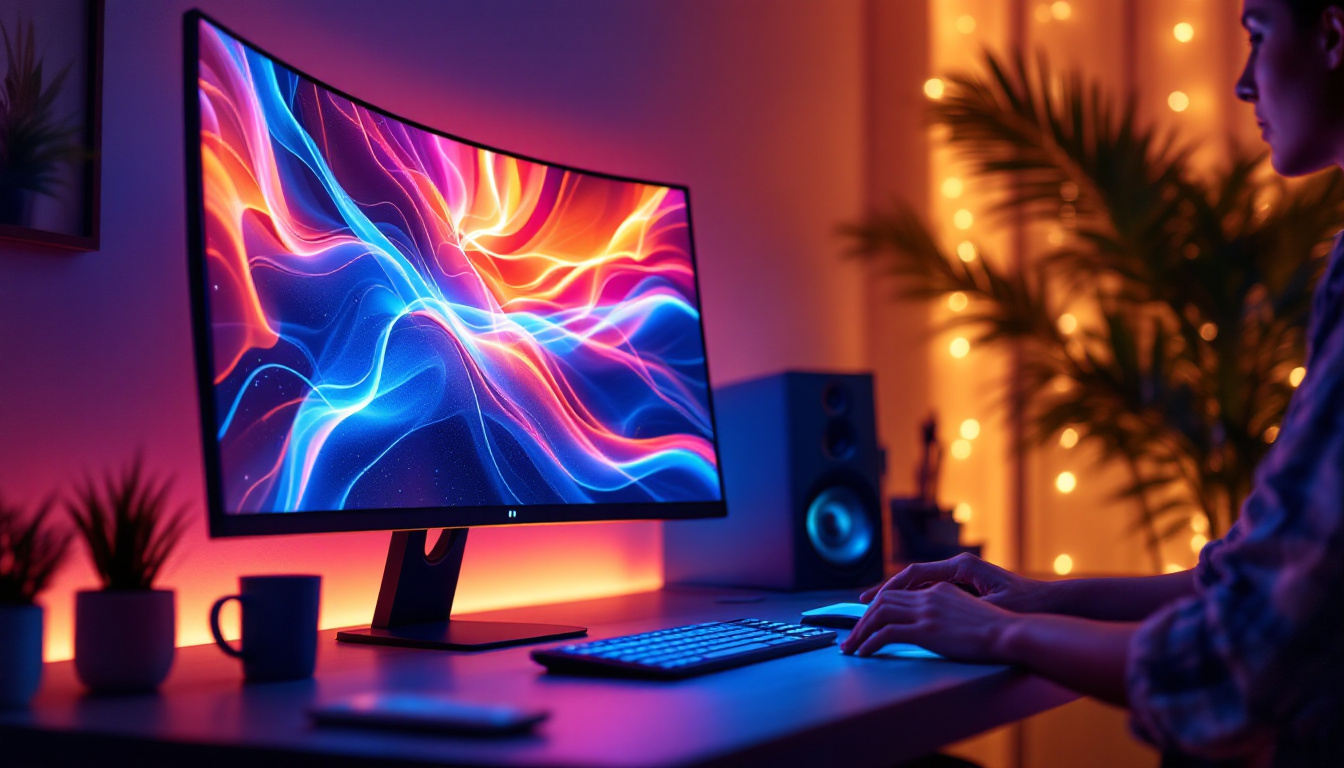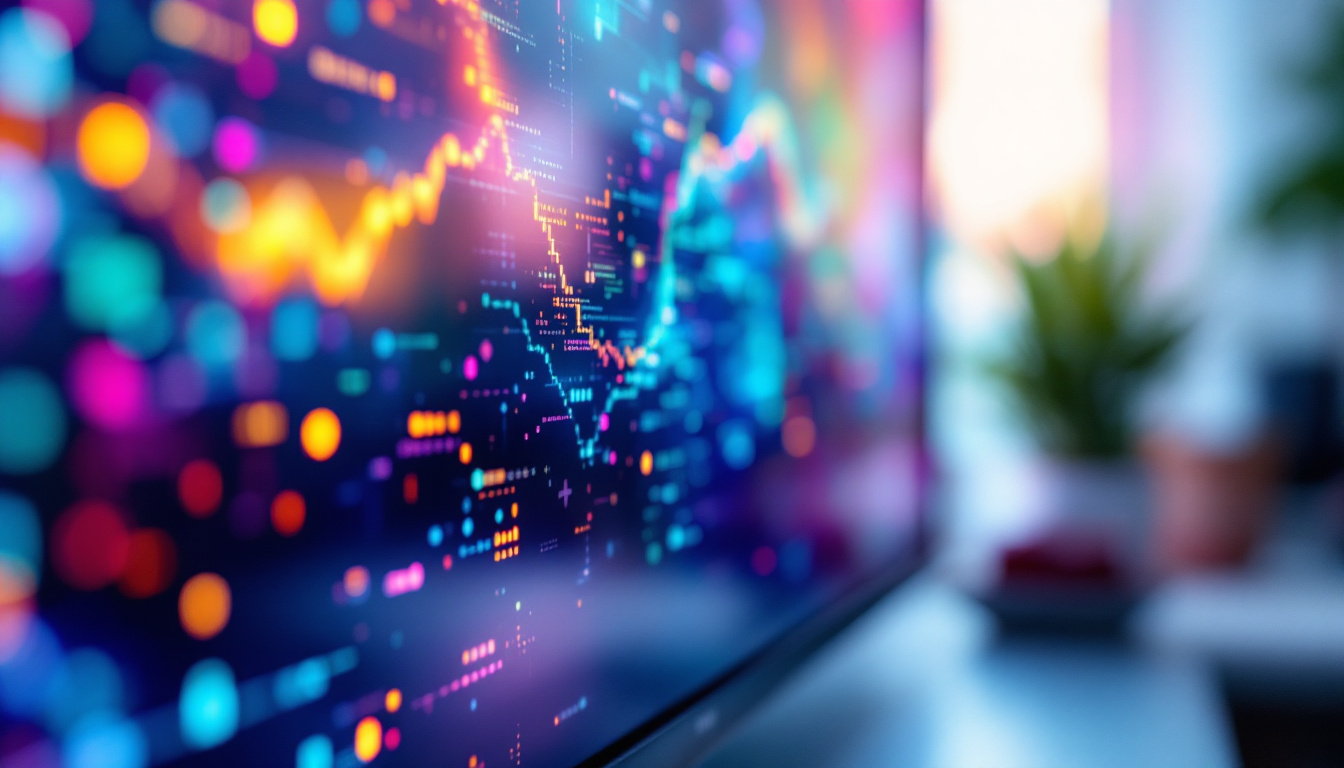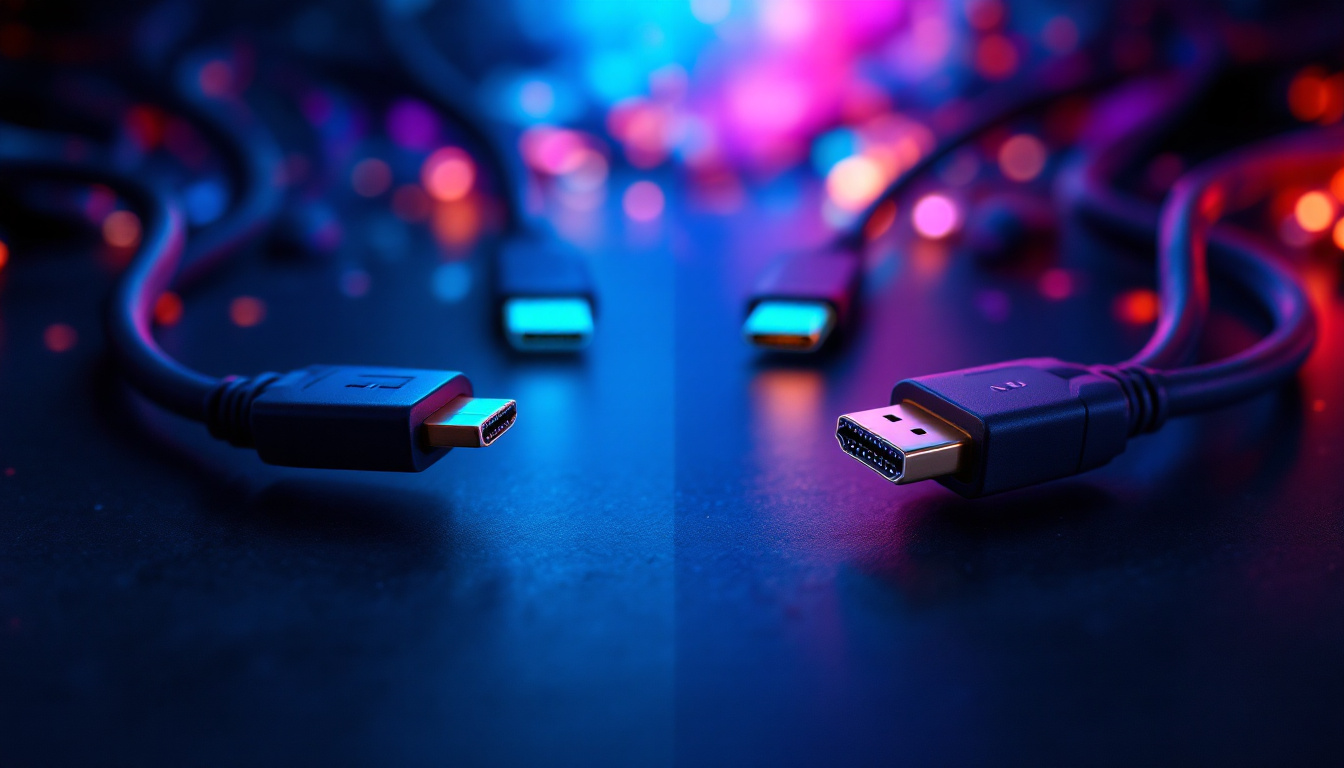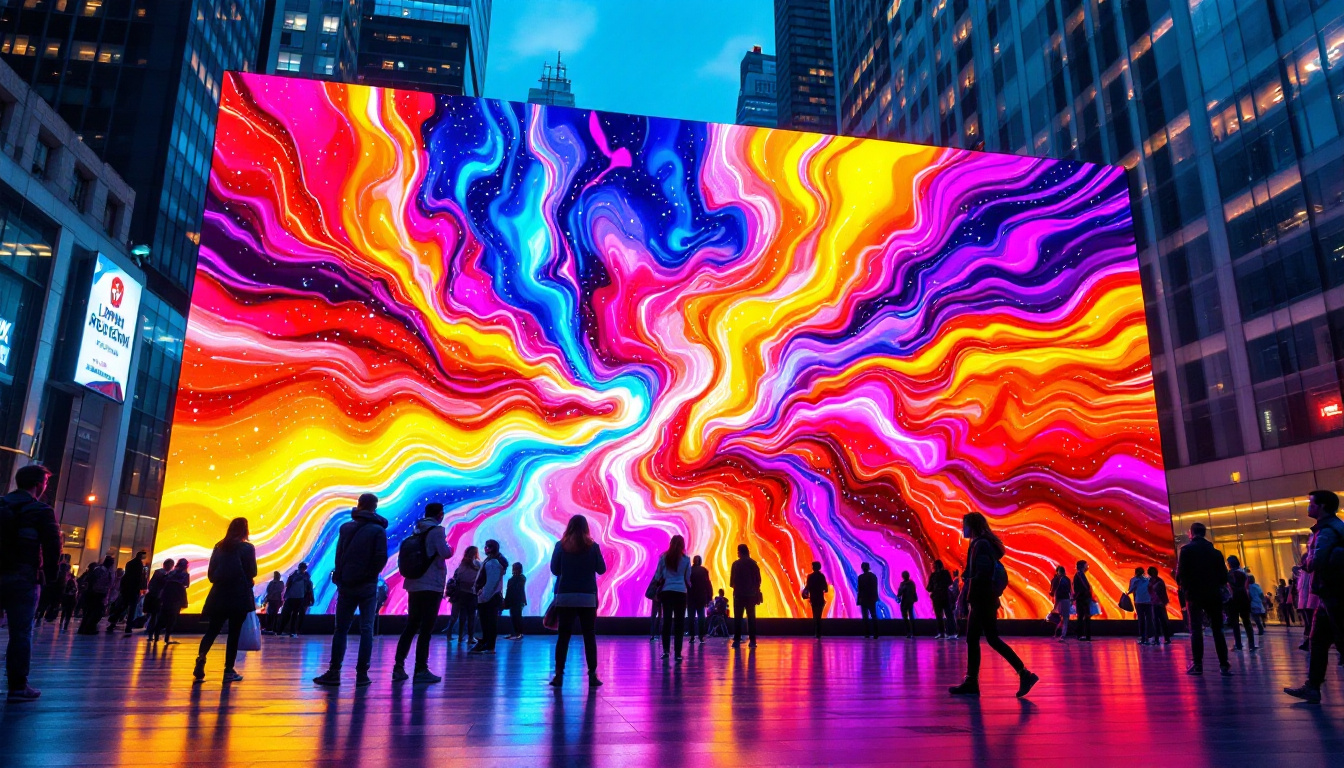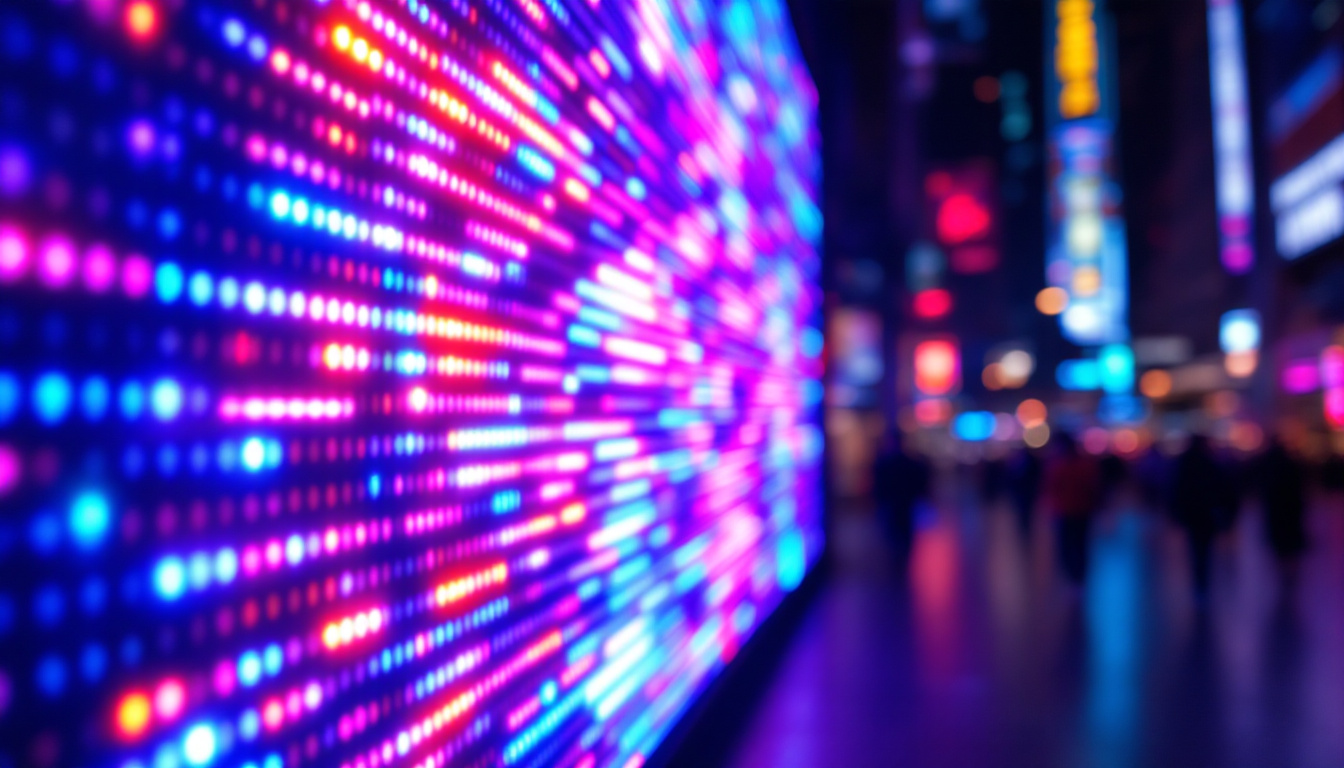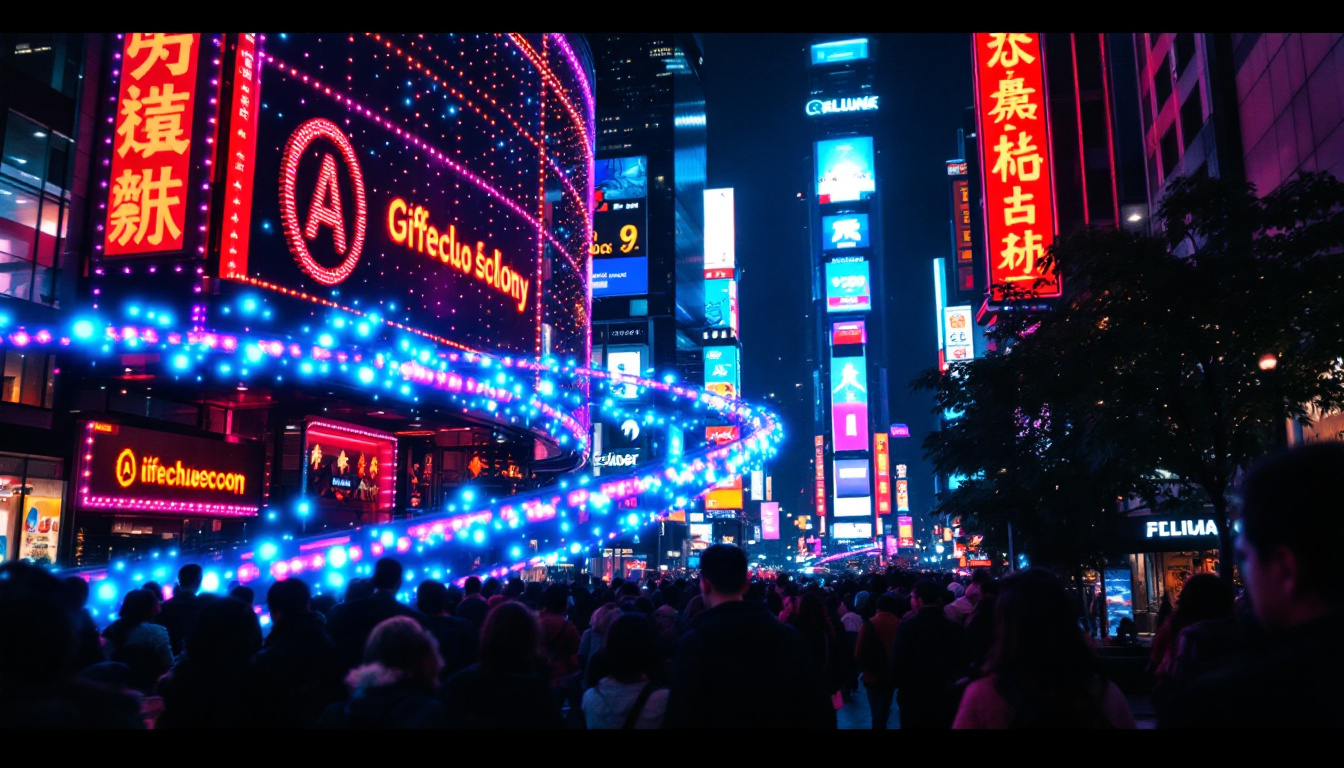In the realm of modern technology, LED displays have emerged as a cornerstone of visual communication. From advertising billboards to television screens, the versatility and efficiency of LED (Light Emitting Diode) technology have transformed how information is conveyed. This article delves into the intricacies of LED displays, exploring their functionality, applications, and advantages.
What is an LED Display?
An LED display is a type of flat panel display that uses light-emitting diodes as its primary technology. Unlike traditional displays that rely on backlighting, LED displays utilize individual diodes to produce light, enabling a more vibrant and energy-efficient output. This technology can be found in various formats, including indoor and outdoor screens, televisions, and digital signage. The versatility of LED displays makes them suitable for a wide range of applications, from large-scale billboards in bustling city centers to smaller screens in retail environments, enhancing the visibility and appeal of advertisements and information.
The Components of an LED Display
Understanding the components of an LED display is crucial to grasping how they function. The primary elements include:
- LEDs: These are the core components that emit light. Depending on the color, different types of LEDs are used, including red, green, and blue (RGB) diodes.
- Pixel Matrix: The arrangement of LEDs forms a pixel matrix, where each pixel can be individually controlled to create images and videos.
- Control System: This system manages the input signals and ensures that the correct information is displayed on the screen.
In addition to these primary components, LED displays may also include protective layers, such as tempered glass or acrylic, which shield the diodes from environmental factors and physical damage. Furthermore, advanced LED displays often incorporate heat management systems to dissipate heat generated during operation, ensuring longevity and consistent performance. The integration of these components is essential for creating displays that not only look stunning but also stand the test of time in various conditions.
How LED Displays Work
LED displays operate on a straightforward principle. When an electric current passes through the diodes, they emit light. By varying the intensity of the current, different colors and brightness levels can be achieved. In RGB LED displays, the combination of red, green, and blue light creates a full spectrum of colors, allowing for intricate images and videos to be displayed.
The control system plays a pivotal role in this process, interpreting the input signals from devices like computers or cameras and converting them into a format that can be displayed on the screen. This seamless interaction between hardware and software is what makes LED displays so effective. Moreover, modern LED displays often feature advanced technologies such as dynamic range adjustment and color calibration, which enhance the viewing experience by ensuring that colors remain true to life and images are displayed with remarkable clarity, even in varying lighting conditions. This adaptability is particularly important for outdoor displays, where sunlight can significantly impact visibility.
Types of LED Displays
LED displays come in various types, each designed for specific applications. Understanding these types can help in selecting the right display for a particular need.
Indoor LED Displays
Indoor LED displays are designed for use in environments such as shopping malls, conference rooms, and theaters. They typically have a higher pixel density, which results in sharper images when viewed from a close distance. These displays are often used for advertising, presentations, and entertainment purposes. Additionally, many indoor LED displays feature advanced technologies such as HDR (High Dynamic Range) and wide color gamuts, enhancing the visual experience with vibrant colors and deeper contrasts. This makes them ideal for showcasing high-quality video content, ensuring that viewers are captivated by the imagery.
Outdoor LED Displays
Outdoor LED displays are built to withstand harsh weather conditions and have a lower pixel density compared to indoor displays. They are commonly used for billboards, sports stadiums, and public information displays. The brightness of outdoor LED displays is significantly higher to ensure visibility in direct sunlight. Furthermore, many outdoor displays are equipped with protective features such as water and dust resistance ratings, ensuring durability and longevity. These displays can also incorporate dynamic content, allowing for real-time updates and interactive features, which can engage audiences more effectively and provide timely information during events.
Flexible LED Displays
Flexible LED displays represent a newer innovation in display technology. These screens can be bent or curved, making them suitable for unique installations and creative designs. They are particularly popular in art installations and modern architecture, allowing for a seamless integration of technology and aesthetics. Moreover, flexible LED displays can be used in various formats, including transparent displays that enable visibility through the screen, adding an extra layer of creativity to advertising and branding. Their lightweight nature also facilitates easier installation and transportation, making them a versatile choice for both temporary and permanent setups. As the technology continues to evolve, we can expect even more innovative applications that push the boundaries of traditional display formats.
Applications of LED Displays
The versatility of LED displays has led to their adoption across various industries. Their applications are vast and continue to expand as technology advances.
Advertising and Marketing
One of the most prominent uses of LED displays is in advertising and marketing. Digital billboards and signage can capture attention with vibrant colors and dynamic content. Advertisers can easily update their messages in real-time, allowing for targeted campaigns that can adapt to different audiences and times of day.
Entertainment and Events
In the entertainment industry, LED displays are integral to concerts, festivals, and sporting events. Large screens provide audiences with an immersive experience, displaying live feeds, graphics, and animations that enhance the overall atmosphere. The ability to create stunning visual effects has made LED displays a staple in event production.
Information and Public Services
LED displays are also widely used for public information. Transportation hubs, such as airports and train stations, utilize LED screens to display real-time updates on schedules and arrivals. Additionally, municipalities often employ LED displays for public announcements and emergency notifications, ensuring that critical information reaches the community promptly.
Advantages of LED Displays
LED displays offer numerous advantages over traditional display technologies, making them a preferred choice in various applications.
Energy Efficiency
One of the most significant benefits of LED technology is its energy efficiency. LED displays consume significantly less power compared to LCD or plasma displays, leading to lower operational costs. This efficiency not only reduces energy bills but also contributes to a smaller carbon footprint.
Brightness and Visibility
LED displays are known for their exceptional brightness, making them easily viewable even in direct sunlight. This characteristic is particularly important for outdoor applications, where visibility can be a challenge. The high contrast ratio of LED displays also enhances image clarity, ensuring that content is sharp and vibrant.
Longevity and Durability
LED displays have a longer lifespan compared to traditional displays, often lasting tens of thousands of hours. This durability translates to lower maintenance costs and less frequent replacements. Additionally, many LED displays are designed to be weather-resistant, making them suitable for outdoor use in various climates.
Challenges and Considerations
While LED displays have numerous benefits, there are also challenges and considerations to keep in mind when implementing this technology.
Initial Costs
The initial investment for LED displays can be higher than that of traditional display technologies. However, this cost is often offset by the long-term savings in energy and maintenance. Organizations must weigh the upfront costs against the potential return on investment when considering LED displays.
Content Management
Effective content management is crucial for maximizing the impact of LED displays. Organizations must have a strategy in place for creating and updating content regularly. This may involve using specialized software and training staff to ensure that the displays are utilized to their full potential.
Technical Expertise
Implementing and maintaining LED displays may require technical expertise. Organizations may need to invest in training or hire professionals to ensure that the displays are set up and functioning correctly. This expertise is essential for troubleshooting and optimizing performance.
The Future of LED Displays
The future of LED displays looks promising, with continuous advancements in technology paving the way for even more innovative applications.
Advancements in Technology
As technology evolves, LED displays are becoming more sophisticated. Developments in microLED technology, for instance, promise to deliver even higher resolutions and improved color accuracy. These advancements will enhance the viewing experience and expand the possibilities for creative installations.
Integration with Smart Technology
The integration of LED displays with smart technology is another trend on the rise. Smart displays can connect to the internet, allowing for real-time content updates and interactive features. This integration opens up new avenues for engagement, particularly in advertising and public information sectors.
Sustainability Initiatives
As environmental concerns grow, the demand for sustainable technology is increasing. LED displays are already more energy-efficient than traditional displays, but future innovations may further enhance their sustainability. Manufacturers are exploring eco-friendly materials and production methods to minimize the environmental impact of LED displays.
Conclusion
LED displays have revolutionized the way information is presented and consumed. Their versatility, energy efficiency, and vibrant output make them an ideal choice for a wide range of applications. As technology continues to advance, LED displays will undoubtedly play an even more significant role in our daily lives, shaping the future of visual communication.
Understanding the various aspects of LED displays—from their components and types to their applications and advantages—can empower organizations and individuals to make informed decisions. Whether for advertising, entertainment, or public information, LED technology offers a dynamic solution that is here to stay.
Discover LumenMatrix’s Innovative LED Solutions
Ready to elevate your visual communication with the latest in LED technology? Look no further than LumenMatrix, a pioneer in crafting LED display modules that bring your brand to life. From the immersive Indoor LED Wall Display to the robust Outdoor LED Wall Display, and from the dynamic Vehicle LED Display to the sleek LED Poster Display, LumenMatrix offers a comprehensive range of solutions tailored to your needs. Experience the future of engagement with our LED Sports Display, Floor LED Display, Custom LED Display, All-in-One LED Display, and LED Transparent Display. Embrace the revolution in digital signage and let LumenMatrix help you make a lasting impression. Check out LumenMatrix LED Display Solutions and start your journey towards unparalleled visual storytelling.

